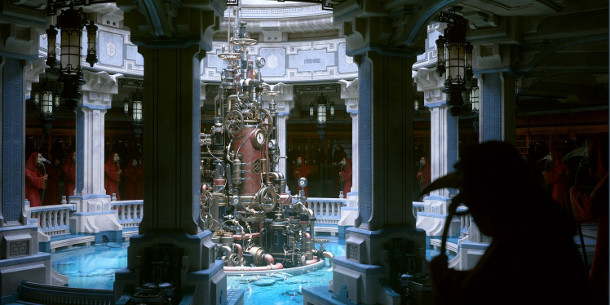Redshift 2.0 ships: new 3ds Max version also available

Age of Vultures by Toni Bratincevic: an image rendered in Redshift, version 2.0 of which has just been released. Bratincevic also previously created the key promotional image for V-Ray 3.0 for 3ds Max.
Redshift Rendering Technologies has released Redshift 2.0, a big update to the GPU production renderer that also introduces a long-awaited new version for 3ds Max as well as the existing Maya and Softimage editions.
A rising star of the rendering market
First released in 2014, Redshift has quickly become a significant player in the rendering market, with Blizzard Entertainment, Glassworks, Blue Zoo and A Large Evil Corporation among its users.
The software has the distinction of being one of the few biased GPU-based renderers available, trading absolute realism for increased control over the look of a render – and the time taken to calculate it.
New in Redshift 2.0: PBR materials, improved shading, volumetrics and baking
The 2.0 update skews that balance further in Redshift’s favour, adding a new native PBR-based material, intended for users who want physically based effects like light dispersion and chromatic aberration.
The update also adds support for GGX and Beckmann/CookTorrance BRDFs: surface microshading technologies now widely used in modern renderers, including V-Ray, Corona and Arnold.
In addition, Redshift 2.0 can now render volumetrics in the industry-standard OpenVDB format; handling of subsurface scattering has been improved; and there is now support for baking lighting and AOVs.
You can read a full list of changes below (taken directly from Redshift’s press release):
- Volumetrics (OpenVDB)
Render clouds, smoke, fire and other volumetric effects with production-quality results (initial support for OpenVDB volume containers). - Nested dielectrics
Accurately simulate the intersection of transparent materials with realistic results and no visual artifacts. - New BRDFS and linear glossiness response
Model a wider variety of metallic and reflective surfaces via the latest and greatest in surface shading technologies (GGX and Beckmann/CookTorrance BRDFs). - New SSS models and single scattering
Attain more realistic results with support for improved subsurface scattering models and single-scattering. - Redshift Material
Utilize a more intuitive, PBR-based main material, featuring effects such as dispersion/chromatic aberration. - Multiple dome lights
Combine multiple dome lights to create more compelling lighting. - alSurface support
Access full support for the Arnold shader without having to port settings. - Baking
Save considerable amounts of rendering time with baking for lighting and AOVs.
Pricing and availability
Redshift 2.0 is available for Maya 2011 and above, Softimage 2011 and above and 3ds Max 2013 and above, running on 64-bit Linux and Windows XP and above. It’s CUDA-based, so you’ll need a suitable Nvidia GPU.
Versions for Houdini and Cinema 4D are currently in alpha, with full releases expected “later in 2016”.
Pricing remains unchanged at $500 for a node-locked licence and $600 per floating licence, both with one year’s maintenance, but the company is offering a 20% launch discount until 19 July 2016.
Read more about Redshift 2.0 on Redshift Rendering Technologies’ blog
